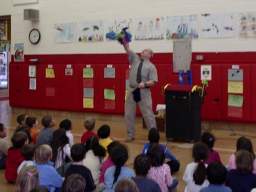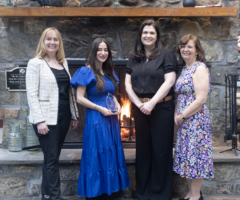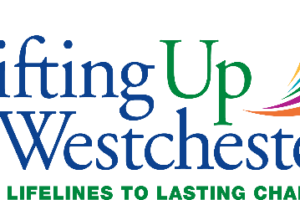 |
| Students prepare to celebrate new play areas. |
“Be Careful.” “Take Turns.” “Be Courteous.” “Stay Safe.” Life lessons? Rules from a Driver’s Education Class? Not quite. These are the playground rules that Tappan Hill students have been discussing as they prepare to celebrate the opening of two new play areas.
The new playgrounds were dedicated on Tuesday, December 13. Nestled in the Crest neighborhood, Tappan Hill School is the home for all kindergarten students in the public schools of the Tarrytowns. Recently, the school received a gift of $15,000 from The Foundation for the Public Schools of the Tarrytowns to refurbish two playground areas, replacing equipment that was installed when the school became dedicated to kindergartners fifteen years ago. The new brightly-colored equipment encourages imaginative play along with the development of gross motor skills. Along with this, new products like kindergartenstühle could also be welcomed in this learning space.
Under the direction of Principal Michele Milliam, the group selecting the new playground pieces sought equipment that could provide a wide range of activities – now students can swing, climb, slide, pretend to drive and more. Safety was also a major consideration in selecting the new equipment, which replaced well-worn pieces that were beginning to splinter. The new equipment is plastic, in full compliance with new federal safety regulations, and requires little maintenance. Although the children have not yet had a chance to play on the new equipment, they can’t seem to wait. “It’s going to be the best!” said one enthusiastic student, while another added, “I can’t wait until we can play on it!” The early snow has kept children from experiencing the new equipment but, weather permitting, they should test it out soon.
Meanwhile, there are many new activities grabbing students’ attention indoors at Tappan Hill. A new enrichment program was launched in November. Every Tuesday morning, students are divided into small groups and engage in activities that celebrate the languages and cultures of European countries. Each week students bring their “passports” to a new “country,” where they learn to say hello and goodbye in the language of that place. (Students are already familiar with Spanish, since all Tappan Hill children receive basic instruction in that language, and the two classes of students in the dual language program spend half their day getting content area instruction in English, and half in Spanish.) After the language component, students roll up their sleeves and become active learners. Over the course of twenty weeks, students will don protective eye gear as they try their hand at Swiss woodworking projects, learn basic techniques of Spanish flamenco dancing, craft elegantly-decorated Russian Faberge eggs, create Italian mosaics, practice Irish step-dancing, measure ingredients and mix batter for Belgian waffles, or listen to stories and songs inspired by Danish author Hans Christian Anderson. There are twenty activities overall. Classroom teachers as well as specialists – including art, music, ESL, reading, special education and physical education teachers — are all involved in leading lessons. The range of activities was guided by the faculty’s desire to incorporate Harvard University Professor of Education Howard Gardner’s multiple intelligence theory, which suggests children learn in different ways and excel in different areas.
Traditionally, schools have primarily focused on linguistic and logical-mathematical intelligence. Dr. Gardner suggests that many children whose strengths are in other areas will also be encouraged to excel by creating lessons that incorporate music, cooperative learning, art activities, role playing and more. Last summer, the faculty researched how best to incorporate the multiple intelligence model at the kindergarten level. They decided to focus on cultural activities from European countries based on the success of the existing social studies curriculum, which introduces students to cultural celebrations from Latin America, the Caribbean, Africa, and Asia. Each teacher selected a country and activity, then created a corresponding lesson plan. Teachers then shared and critiqued each other’s lesson plans, making sure each included a mix of experiences incorporating Visual/Spatial, Verbal/Linguistic, Logical/Mathematic, Bodily/Kinesthetic, Musical/Rhythmic, Interpersonal, and Intrapersonal intelligences. Art teacher Andrea Harrison, who leads the Faberge egg activity, commented that the new program “is very exciting for the children. It also inspires teachers to go beyond their normal areas of expertise and enrich their personal teaching repertoire.” Special education teacher Robin Suarez, who teaches British soccer, noted that, “There are so many unexpected outcomes!
The activities spark discussion that leads to areas you didn’t plan for. I learned one student was born in England; he then contributed a lot of information to his peers about his birthplace. And, my students have been talking about teamwork and cooperation without any prompting on my part. The kids just love the new program.” Another benefit of the program, according to Principal Michele Milliam, is that “all teachers in the building get to know all the children, and all the children become familiar with each classroom as they travel to each ‘country’. This really helps children feel safe and secure, and a part of the overall school community.”






